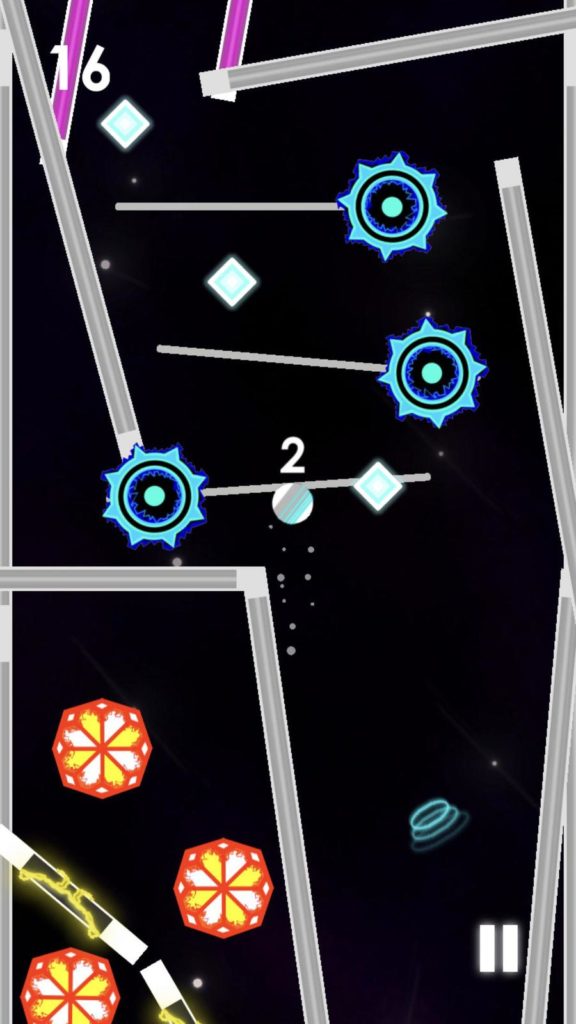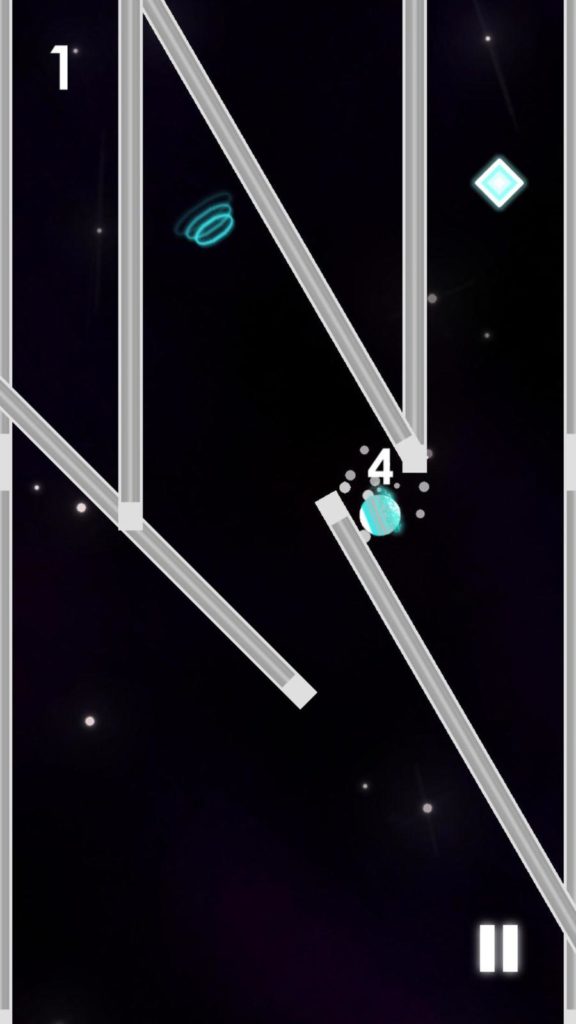Have you got a thing for slingshot style puzzle games you can play while floating around in space? Well, today we’ve got a game you’ll probably want to check out, but before you do, this is our interview with Tangent Games, the developers of Lost Space: Ascend.
If you have yet to check out our review of Lost Space: Ascend, you can do so here!
Before we start we’d like to thank the Tangent Games Team for participating in our interview and for answering all of our geeky questions! Thanks Guys!
…and without further ado, our interview begins…
The Interview
Thanks for taking the time to talk to us about Lost Space: Ascend! Could you kick-start this interview by telling us a little about your studio, yourself, and what drew you into the gaming industry?
Tangent Game Studios is a game development team comprised of nine high school students who just graduated last May. Over the past two years we’ve released three games in total – Color Tap: Match, Wobl: Dodge, and most recently, Lost Space: Ascend. My name is Kevin Liu, Chief Developer at Tangent. I became interested in game development after watching a video which talked about the development of one of my favorite games, World of Tanks. I was inspired to create a multidisciplinary team dedicated to developing video games. To find out more about myself and the rest of the team, check out our webpage at tangentgamedevs.wixsite.com/tangent/about
Ok, let’s start talking about Lost Space: Ascend… What are the highlights of your latest release?
Lost Space is the biggest game we’ve completed thus far. Unlike our previous two arcade titles, Lost Space is a level-based puzzle game with a bit of exciting action thrown into the mix. Lost Space features a very unique art style which truly adds flavor to the fun and engaging gameplay. It is also the first game where we extensively focused on sound design, in particular, the sound effects of the many in-game events. Each level requires a unique balance of strategic planning, speed, and timing. Although it’s not too hard to beat any one level, players will find it difficult to achieve the Pink Hexagon medal for every level, a symbol of true mastery.
What was the core idea or inspiration behind Lost Space: Ascend? And perhaps more importantly, where do you find inspiration for your games in general?
Lost Space began as a prototype which only involved the basic tap and drag control mechanism, most notoriously used at the time by the game Ballz. After toying with interactions in a physics-enabled world, the zero-gravity nature of the gameplay inspired us to give the game a space theme. Many of our games begin with a single core mechanic, which we would then play around with, tweak, and abstract. If the idea is interesting, we keep going with it. Otherwise, we move on to something new.
How long was Lost Space: Ascend in development for? And are there any interesting and/or exciting moments or experiences you would like to share with us from that time?
We spent a little more than ten months working on Lost Space. We spent a long time, the first five/six months, refining the game mechanics in idealized conditions before we finally began the journey of designing levels, something our team was very excited about.
The greatest moment during its development was when we finally perfected the seamless transition between levels, a key feature of Lost Space. This kept the gameplay smooth and continuous. Interestingly, we originally planned to have an in-game shop where you could unlock different droids which had special characteristics, such as increased speed or resistance to damage. This idea was ultimately scrapped because we favored being able to tailor each level to a unique level of difficulty, rather than forcing the player to choose a particular droid in order to beat a level.
It has been fun to look back on our development and reflect on how much Lost Space changed while we were creating it. One of the key transitions we made in the process was from a more story-driven, sci-fi space premise to a far more abstract theme, which worked out quite well for the art. There are so many elements in the final product of Lost Space that we could not have imagined when we started.
What software, developer-tools, or black-magic(?) did you use when making Lost Space: Ascend? Is there anything you would like to share with the developers who read Edamame Reviews?
Lost Space was developed using GameMaker Studio 1.4, the same engine used to create games like Spelunky and Undertale. We had many level designers for Lost Space, each with their own unique style and theme.
As a tip to other developers, complete your game’s design before you start to actually work on it. This was one of the most valuable lessons we learned from our past games. Like I mentioned before, we spent a majority of our time tweaking and fine-tuning each mechanic before we started working on aspects like level design or developing the user interface. Specifically, we spent the first three months writing up our Design Document for Lost Space, which detailed every single aspect of the game, from describing mechanics to designing the menu layout.
Lastly, polishing is everything, and we mean it. Every detail, from dust effects to button-fades to small animations, was added during the late stages of development. Although these additions weren’t always obvious, they added an invaluable richness to the gameplay of Lost Space.
Is there any secret “developer-advice” you can give our lucky players who read this interview?
Many players forget how powerful it is to be able to stop instantaneously at any moment just by tapping on the screen (unless you’re in a gravity well, that is). Also, it’s not a bad idea to go a bit slower, especially in some of the later levels. You’ll have more control of your droid and more time to react.
What can we expect to see in Lost Space: Ascend or from Tangent Game Studios in the not so distant future? What do we have to look forward to next?
In the upcoming months, we’ll be working on porting Color Tap and Wobl to the Google Play Store. In addition, Lost Space will continue to receive updates and perhaps some more levels in the future if our player base grows large enough. Follow us @tangentgamedevs on social media for the latest news as we might be releasing one or two new arcade titles next month!
Lastly, is there anything you would like to say to our awesome team of Writers, Developers, and Patrons who keep Edamame Reviews up and running?
We’d seriously like to thank Edamame for their support of indie developers like Tangent. The team at Edamame is friendly and their reviews are always enjoyable to read. Without the support of Edamame, I am certain many interesting indie titles would have gone unnoticed. From all of us Tangent, we thank everyone at Edamame for being the first to review our games and for supporting indie developers!
Love our interview with Tangent Game Studios?
Why not give Lost Space: Ascend a try? The download link is just below.📲
Let us know your thoughts at @Edamame_Reviews🔔
Let us know what you thought in the comments section below and as always thanks for following edamame.club




